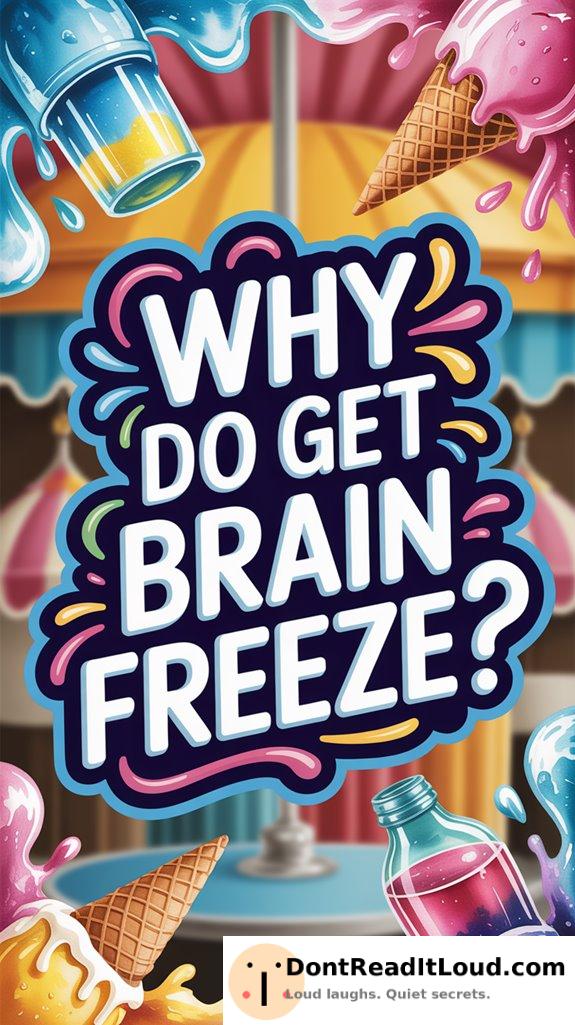
When you eat something cold too fast, sensors in your mouth send a quick signal through your nerves to your brain. This sudden reaction is felt as pain, often called brain freeze. The cold also causes your blood vessels to tighten, which increases the discomfort. To avoid this, enjoy your ice cream slowly. Up next, we’ll explain why your brain interprets this cold sensation as a freeze.
The Anatomy of a Brain Freeze
When you experience a brain freeze, also known as an ice cream headache, it’s all about how your body responds to cold stimuli. Your mouth’s temperature sensors, usually calm, suddenly jolt into action, signaling, “That’s way too cold!”
This rapid alert travels through your nerves faster than your last dash for ice cream. These nerves, with a flair for drama, quickly deliver the frosty news to your brain. Mistaking the chill for an attack, your brain registers the sensation as pain.
It’s like your body’s own version of “Who touched the thermostat?” Your nervous system scrambles to tell the difference between a tasty treat and a sudden arctic blast.
The Role of Blood Vessels
Your body doesn’t just register the cold as pain; it also triggers a reaction in your blood vessels. Picture your blood vessels as tiny drama queens, constricting when cold hits your palate, as if they’re auditioning for an ice age movie.
This blood vessel constriction is a knee-jerk reaction to the frigid shock, quite literally shrinking from the cold like a bad hair day.
But wait—there’s more! Instead of passively enduring the chill, your body quickly launches a neural response, sending signals in a flash. This reaction aims to restore warmth and balance, even if it feels like an unexpected brain freeze dance.
The Brain’s Response to Cold
As soon as the cold sensation hits, your brain acts like a vigilant conductor orchestrating a swift response. It’s as if your noggin suddenly turned into a dramatic opera house, with cold receptors screaming, “It’s freezing in here!”
These receptors, located in your mouth and throat, send urgent pain signals up to your brain, which then reacts quickly.
Your brain, picking up these distress signals, interprets them as an emergency from your forehead. It responds with a burst of discomfort—what we know as brain freeze.
This brief pain is your body’s quirky reminder to slow down with the cold treats.
Tips to Prevent Brain Freeze
After understanding how your brain reacts to cold, let’s explore ways to keep that sharp pain at bay.
First, slow down on your dairy consumption. Picture your brain as a drama queen; too much ice cream too quickly, and it starts to protest! Enjoy your scoop as if you’re savoring a special treat.
When it comes to cold drinks, take your time and sip gently, letting your mouth warm each sip.
If brain freeze hits, press your tongue against the roof of your mouth to warm things up.
Conclusion
When you get brain freeze, it’s a reaction to something very cold touching the roof of your mouth. Blood vessels in this area constrict, then quickly expand, sending pain signals to your brain. To prevent brain freeze, eat cold foods slowly and try to keep them away from the roof of your mouth. You can also use your tongue to warm the area if you feel discomfort. Knowing how this works helps you enjoy icy treats without the sudden, sharp pain.



